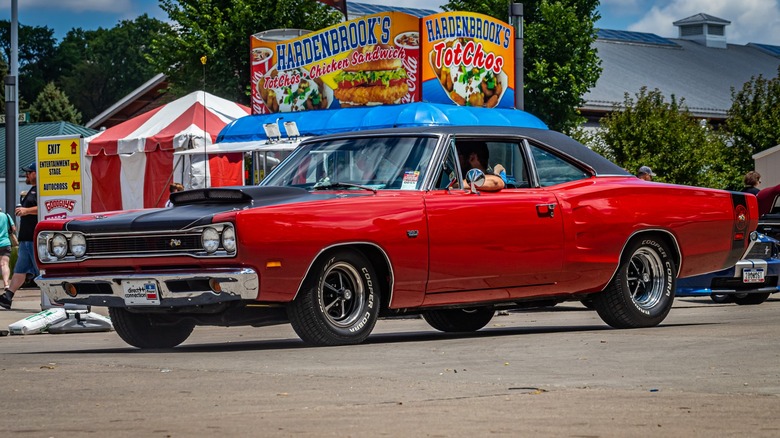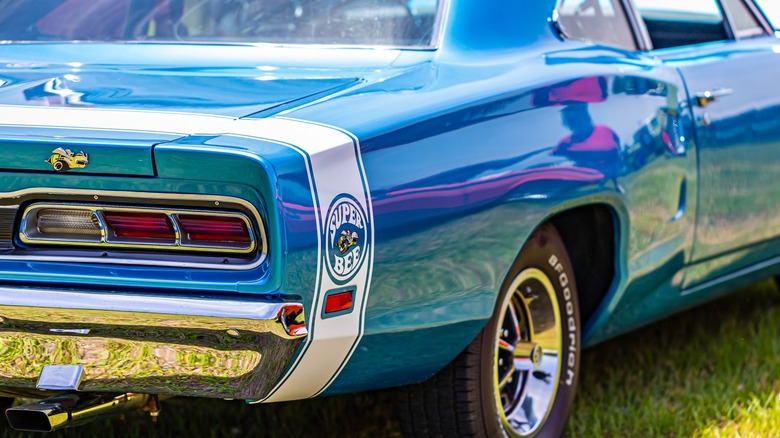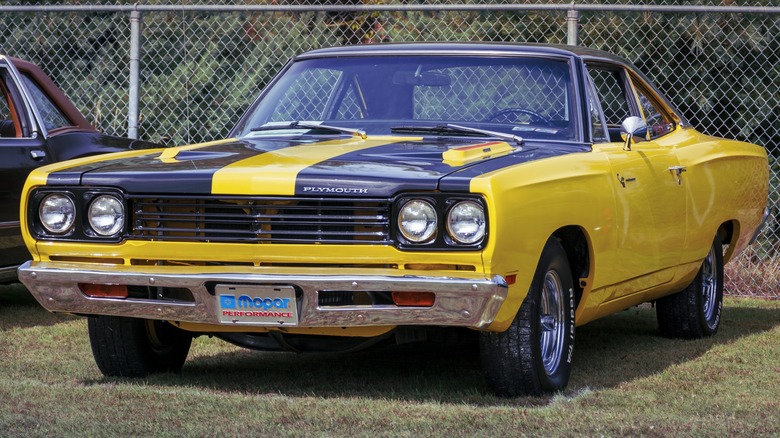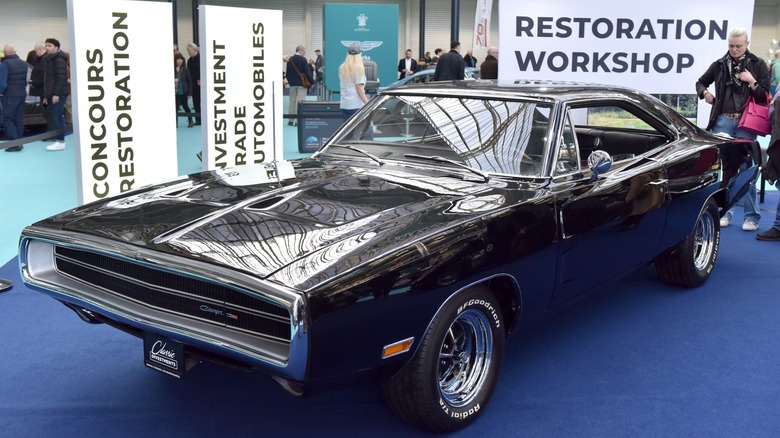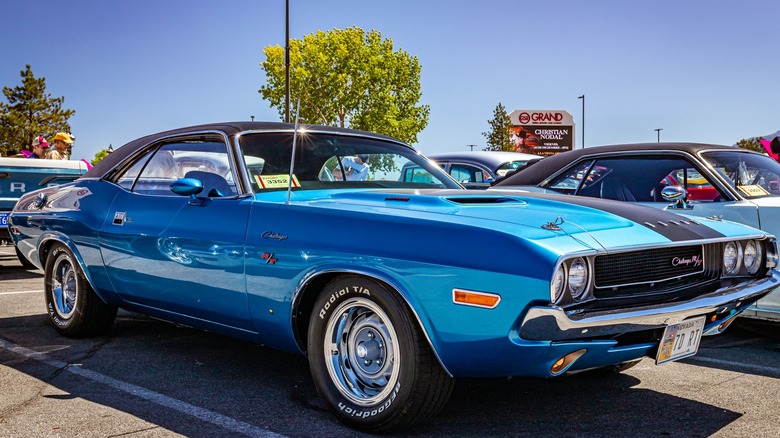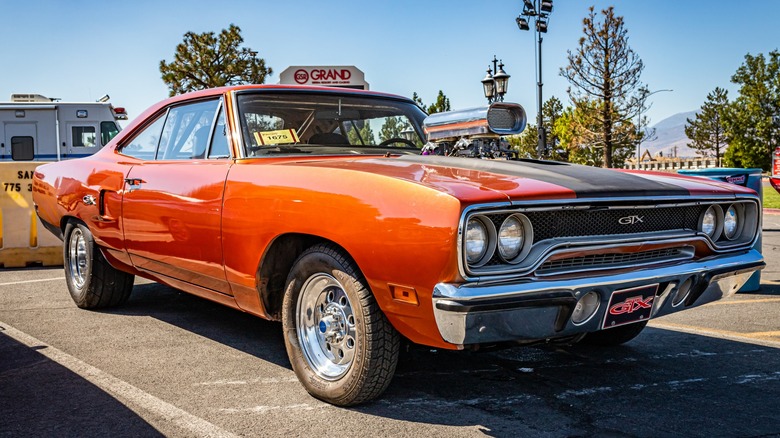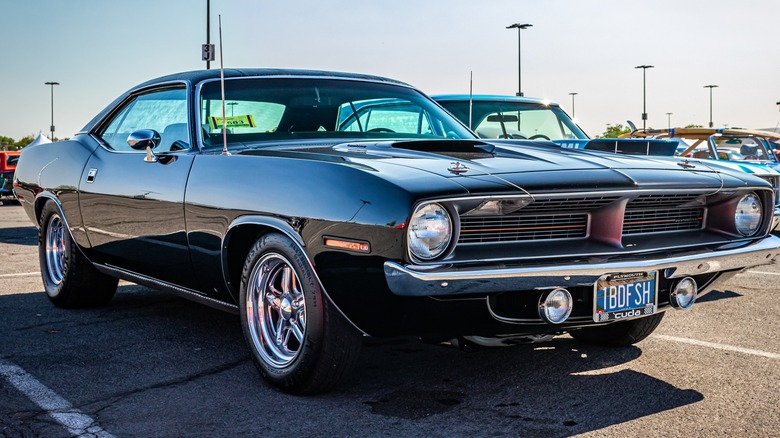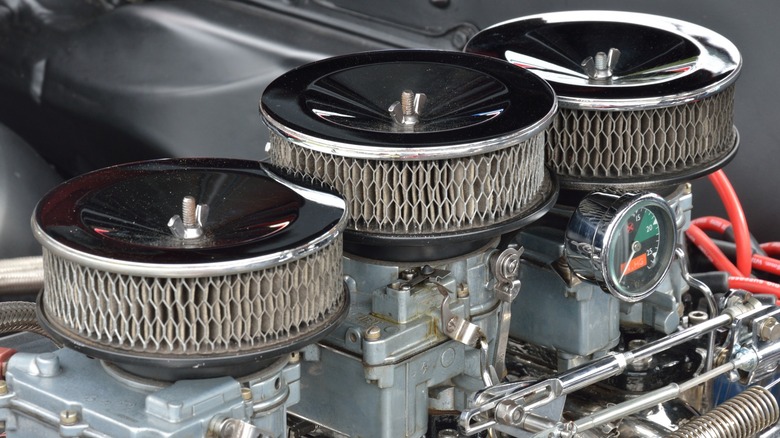6 Legendary Muscle Cars Built With The 440 'Six Pack' Engine
In the middle of the 1969 model year, Chrysler began offering a three-two-barrel carburetor arrangement, called the Six Pack by Dodge and Six-Barrel by Plymouth, as an option for its 440-cubic-inch big block-powered Dodge Super Bee and Plymouth Road Runner muscle cars. The following year, until the option's demise at the end of 1971, Chrysler offered the optional performance upgrade for several popular models. However, only the 1969-½ model year Six Pack and Six-Barrel cars used the original aluminum intake manifold.
Throughout the majority of the 1960s, Chrysler's highest-performing automobiles featured big block engines like the 383 Magnum, 440 Magnum, 440 Super Commando, and 426 Hemi, with horsepower ratings from 330 to 425. The most significant performance gap occurred between the high-output 375-horsepower 440 and the 425-horsepower 426 Hemi.
In the late 1960s, the high-output Chrysler 440 equipped with a single four-barrel carburetor, known as the Magnum in Dodge cars and Super Commando in Plymouth, produced 375 horsepower and 480 lb-ft of torque. The automaker wanted an option with more horsepower without resorting to the Hemi's extra expense and increased weight. Installing the three-deuce setup on the 440 high-output engine gave it 390 horsepower and 490 lb-ft of torque, nearly as much power and more reliability than the Hemi.
1969-½ to 1971 Dodge Super Bee 440 Six Pack
Dodge produced the Super Bee, a spin-off of the Dodge Coronet, from 1968 through 1971. The Super Bee upped the ante for the similar Plymouth Road Runner with upgraded accessories like its Hurst Competition-Plus shifter.
Built with performance objectives in mind from its inception, powertrain options for the 1968 Super Bee included the 335-horsepower 383 Magnum and the 425-horsepower 426 Hemi. Halfway through the 1969 model year, Dodge began offering the 440 Six Pack as an optional powertrain for the Super Bee.
The six-barrel carburetor setup was part of Chrysler's A12 option package. Visual aspects of the upgraded 1969 Super Bee included a lightweight hood attached to the car with a racing-inspired pin at each corner instead of the hinges and latches found on most cars. The unique hood also featured a substantial hood scoop with an all-black paint job. The black paint carried over to a set of matching steel wheels.
In 1969, Dodge fitted nearly 2,000 Super Bees with the A12 option, compared to 125 equipped with the 426 Hemi engine. The Hemi's high cost and finicky nature decreased its popularity.
The remodeled 1971 Dodge Super Bee shared the same platform as the Dodge Charger. The new model also offered a small block engine option, the 275-horsepower 340-cubic-inch V8.
1969-½-1971 Plymouth Road Runner 440 6-Barrel
Like its Dodge Super Bee counterpart, the Plymouth Road Runner saw the debut of the 440 Six-Barrel, or 6-BBL, as part of the A12 option midway through the 1969 model year and lasting through 1971. Other engine options through the period include the 335-horsepower 383-cubic-inch V8 and the 425-horsepower 426 Hemi.
The early A12 Plymouth Road Runners also featured the black fiberglass hood with functional air scoops secured by four racing-style pins. Its black steel wheels lacked hubcaps, with chrome lugnuts as the only adornment. Plymouth produced around 1,400 440 Six-Barrel powered Road Runners in 1969.
1970 Plymouth Road Runners received a makeover that included updates to the grille, hood, front fenders, brakes, and non-functional scoops to the rear quarter panels. The 1971 model year saw the last of the 440 Six-Barrel and 426 Hemi engine options. However, the Plymouth Road Runner would soldier on with reduced horsepower engine options until 1980.
1970-1971 Dodge Charger 440 Six Pack
The Dodge Charger debuted in 1966, and by 1970, it was at the tail end of its second generation. Second-generation Dodge Chargers found pop-culture fame with appearances in the long-running Dukes of Hazard television show, on the silver screen with the Fast and Furious franchise, and as the first NASCAR entry to break the 200 mph mark on a superspeedway. Interestingly, none of those cars used the 440 Six Pack for power. But Chrysler never meant the 440 to be the superstar of the lineup.
The 1970 Dodge Charger offered various engine options, including the 318 cubic-inch small block V8, the 426 Hemi, and the 440 Six Pack. Dodge supplied the 375-horsepower 440 Magnum as the base engine, while those seeking a more subdued driving experience could opt for the 225 cubic-inch six-cylinder. Transmission options included three-speed automatics, three-speed manuals, and four-speed manuals with a pistol-grip Hurst shifter.
The third generation Dodge Charger debuted in 1971, the final year for the 440 Six Pack. The new design featured a front grille split by a bulbous chrome nose and a sloping rear window.
1970-1971 Dodge Challenger Six Pack
The Dodge Challenger, introduced in late 1969 for the 1970 model year, was built on the new E-body platform created to handle Chrysler's big block engines, including the 440 Six Pack. Unfortunately for first-generation Challenger fans, big block engine-powered muscle cars had nearly run their course by the time Dodge introduced the Challenger. According to Motor Trend, sales for the 1970 Challenger came in at about 83,000, while Challenger sales fell to fewer than 30,000 in 1971.
In addition to the 440 Six Pack engine, the Dodge Challenger offered various engine options, including six cylinders, small block V8s, and other big blocks like the 426 Hemi. Transmission options, like those found in the Charger, included manual shift versions with three or four speeds and a three-speed automatic
The 440 Six Pack engine option, available in the Dodge Challenger R/T, was paired with a three-speed manual transmission, although the four-speed manual was an option. The Challenger R/T was available as a hardtop or convertible. After the 1971 model year, Dodge Challenger buyers had fewer options for performance and comfort.
1970-1971 Plymouth GTX Six-Barrel
Plymouth introduced the GTX option for the mid-sized Belvedere in 1967, with the 440 Super Commando engine standard and the 426 Hemi as an option. By 1968, the redesigned GTX was a stand-alone model in Plymouth's lineup.
Like most Chrysler vehicles, the GTX got a face-lift in 1970, the generation's final year, including a refresh to the girl and taillights. The new GTX hood had a single central scoop departing from previous years with a narrower scoop on each side of the hood.
The following year, 1971, ushered in a new generation of the Plymouth GTX with softer, rounded lines, chrome trim around the grille, and a split chrome front bumper. As the final year of the stand-alone model, the 1971 GTX was at the pinnacle of Plymouth's luxury-leaning performance models. The 440 Super Commando engine came as standard equipment, while the 426 Hemi and 440 Six-Barrel engines remained optional for the 1970 model years.
1970-1971 Plymouth Barracuda Six-Barrel
The Plymouth Barracuda enjoyed a 10-year run from 1964 to 1974. Early versions shared Chrysler's A-body platform with the Valiant, and while the two shared some body panels, the Barracuda stood alone with its unique rear window design.
Plymouth pushed the Barracuda's introduction to beat the new Ford Mustang by a couple of weeks, leading some people to wonder if the pony car niche should be called fish car instead. However, the Mustang's initial success, selling over 100,000 more cars in 1964, firmly instilled the pony car moniker.
The third-generation Plymouth Barracuda, introduced in 1970, departed entirely from its Valiant roots. Built on Chrysler's new E-body platform shared with the Dodge Challenger, the Barracuda came in coupe and convertible versions. Other than the shared platform, the Challenger and Barracuda were very different cars.
The Plymouth Barracuda's performance-oriented "Cuda" option featured a standard 335-horsepower 383 cubic-inch engine for 1970 and 1971. Other Cuda engine options for that period included the 290-horsepower 340 Six-Barrel, 375-hp 440 Super Commando, 425-hp 426 Hemi, and 440 Six Barrel with 390 horsepower. The available decal packages and vibrant exterior color options left little doubt the Cuda possessed the capacity to bite.
Why is the 440 Six Pack better than the 440 Magnum?
The most obvious difference is the increased fuel flow from the 440 Six Pack's carburetors. A four-barrel carburetor uses two of its barrels during low-throttle driving, only opening up its full four-barrel capability under heavy acceleration. The Six Pack operates in a similar fashion, using the center two-barrel under light-duty driving and only engaging all tree carburetors when needed.
The #4618 Carter AVS four-barrel carburetor on the 440 Magnum provided a flow of fuel and air up to 800 cubic feet per minute (cfm), but the 440 could use all of that and more. The Six Pack used three Holley 2,300 series two-barrel carburetors totaling 1,350 cfm. The center two-barrel provided 350 cfm for leisurely driving, while the front and rear carburetors supplied an additional 500 cfm each for blowing the doors off the car in the other lane.
The 440 Six Pack enjoyed other upgrades over the Magnum version. Most notably, it received stronger connecting rods to keep the pistons attached to the crankshaft, chrome moly piston rings, an aggressive camshaft profile with more valve lift, longer duration, and more overlap, and a slight compression ratio increase from 10.1:1 to 10.5:1.
